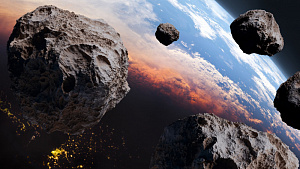Researchers from the Chinese Academy of Sciences have identified rare traces of meteorites in lunar soil samples brought back to Earth by the Chang’e-6 mission, according to a report by
CGTN, a partner of TV BRICS.
Scientists determined that the discovered fragments belong to CI chondrites – a special type of meteorite rich in water and organic compounds. These objects typically form in the outer regions of the Solar System, beyond Mars’ orbit, and are extremely rare on Earth, accounting for less than one per cent of all known meteorites.
Experts suggest that the Earth–Moon system may have experienced a higher frequency of impacts from carbonaceous chondrites than previously thought. The finding helps explain the possible origin of water on the Moon, the study notes.
Furthermore, the data confirm that substances from the outer Solar System can reach its inner regions. According to Lin Man from the Guangzhou Institute of Geochemistry, this is of great importance for understanding the distribution of the Moon’s water resources.
In 2024, the Chang’e-6 mission delivered 1.9 kg of samples from the far side of the Moon. They were collected in the South Pole–Aitken Basin, the Moon’s oldest and deepest crater.
Photo: mikdam / iStock
